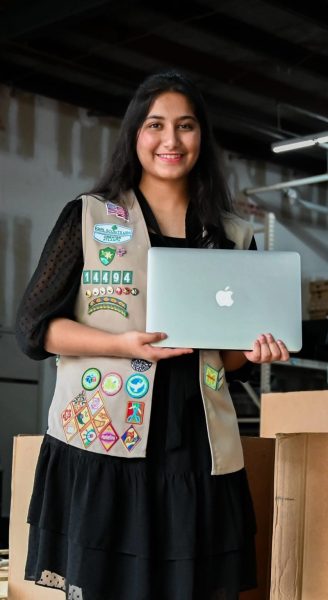The constant evolution of family dynamics

Although Princess Diana once stated “family is the most important thing in the world”, the typical picture perfect idea of what a family looks like isn’t necessarily accurate. Every family dynamic comes with its own set of struggles and turmoil, though that doesn’t minimize the importance of the unconditional love that is often embedded deep within a family.
Family. A six letter word that has the power to dictate one’s entire life. The word family is defined as “a group of individuals living under one roof and usually under one head”. However, that doesn’t even begin to depict the true essence of what a family is. A family is everything. A family is love, frustration, anger, kindness, reliance, and dedication. A family is fighting. A family is sacrifice. A family is dynamic.
The American family has been evolving since the creation of the country itself, initially consisting of a husband, a wife, their biological children, and their extended family. The men worked while the women cleaned. It was simple, in a sense. Couples weren’t even legally permitted to have children together unless they were married, until the creation of common law marriage in the 19th century, whereas by 2007 40% of kids were born to an unmarried mother. Common law marriage meant that a couple could be legally considered married without actually purchasing a marriage license. However, this so called simplicity changed drastically during World War Two. The majority of men left for war, so the women did everything, taking over both parental roles, and ensuring the well being of their families. Once the men returned, this newfound dynamic was irreversible. The women developed a foreign sense of power in the ability to work and to contribute, unwilling to allow that to slip through their fingertips following the return of their husbands. This completely altered society’s view of a family, and of women in general. In 2010, specifically, more women were working than men were, forcing numerous husbands to become more involved in the process of raising their children. The roles had momentarily reversed.
Familial changes didn’t stop here, but rather they continued to grow. Within the last 50 years, the amount of divorce, blended families, and children born to unmarried parents skyrocketed. Grandparents can now be found raising their grandchildren, a concept that would have been exceptionally frowned upon among previous decades. Most children under age 13 now live with two working parents, due to both the new societal role of women as well as the current economic structure, making this way of life fairly necessary.
During all of these familial changes, a parent’s immense effect on children grew apparent, whether a child has emotional issues due to familial relations or simply in regards to the way a child’s personality develops. Parents’ behavior is constantly affecting their kids, whether it’s directly or indirectly. Kids learn social skills through witnessing their parents daily social interaction. A parent is a child’s first teacher, whether there’s a conscious awareness of that or not. This was made evident during the BoBo Doll experiment conducted by Albert Bandura, in which children witnessed adults beating up a doll and then proceeded to do the exact same thing once given the doll. Besides simply their behavior, the environment a parent exposes a child to also impacts them, whether they’re immersed within a particular cultural, religious, or political environment, the type of household they are brought up in strongly correlates with the behaviors they present during development.
Overall, family dynamics don’t simply correlate with who works, but rather involve a variety of aspects. In Western culture, important decisions are usually made by the parents up until adulthood when the children’s’ decisions become independent of their parents. However, in a variety of cultures (American Indian, Hispanic, Asian, etc.) every individual tends to rely on an entire network of people whilst making their decisions (siblings, parents, grandparents, cousins, etc). This doesn’t even come close to the only cultural difference, as families of various cultural backgrounds often operate much differently than others. America is a melting pot. And, in a sense, so is Lambert High School. Looking around school, you see variety. Whether it’s in race, religion, gender identification, or simply hair color. Among these categories are types of families.
Kim Raines, a math teacher at Lambert High School, grew up in a family full to the brim with immense love. Her family had a tremendous effect on her, specifically her mother. Her mom is still her role model, both as a teacher and as a mother. She has always put others first and does her best to be a superb model for both her kids and her students, to this day continuing to keep in touch with many of her students through Facebook. Her dad was always the “fun one in the neighborhood” who played sports with all of the kids. Unfortunately, he passed away from a heart attack when Raines was 11, but his impression was forever lasting. She found a go-to friend in her brother, as the two could entertain themselves for hours. Luckily, her mother remarried when she turned 13, and they “took him in” as their own. He would coach their sports teams and her current kids called him “Papa” until he died two years ago. Her current family is much like the one she was raised in, “lots of activity, lots of fun, lots of sarcasm and witty banter, a happy home”. Her husband is the quieter, serious one. She claims he knows how to have fun, but this isn’t his “usual demeanor”. She considered herself to be the “chronically happy one” who does her best to ensure everyone else’s happiness. Her older daughter, Becky, is 22 years old and the family’s “tech support” who currently works in Buckhead, while her younger daughter Mackenzie, is 20 years old and a “bit more serious and a fiercely loyal friend”. She considers Mackenzie to be a future math teacher. Her family is extremely close and she prides her family on their honesty, figuring that her girls are more honest with her than most daughters are, just like she has always been with her own mother.
An anonymous senior at Lambert High School is growing up with a very different family life, facing a lot more turmoil at home. Her mother works full time and accomplishes all of the chores around the house, while her dad stays at home and “doesn’t really do much”. She isn’t remotely close with her family, other than with her younger sister, who she considers to be her “BFF”. Her relationship with her mom is considerably rough, though she’s trying her best, as they go to mother-daughter therapy once a week. Though, her relationship with her father isn’t much better. They grew very distant since she’s been busy with school, work, and friends since her junior year. Although her family relationships don’t influence her decisions, as she’s very headstrong, they have impacted her mental health. Her familial relationships are one of the major factors that began her depression and anxiety during last year. If she had the ability to change her family she would attempt to increase their time spent apart. She considers herself to be independent, while her mom is dependent, causing her to often times feel tied down. She’d also strive to improve the attitudes of all of her family members, as they are all “so hostile towards each other for no reason”. Luckily, she’s aware that things will improve once she’s on her own in college and hopes for a better relationship with her parents when she’s older.
Luis Paz, a sophomore at Lambert High School, has a dramatically different family dynamic. He comes from a home with significant Latino influence. Both of his parents were born in Hispanic countries, which influences the language they speak as well as their daily meals. However, he’d consider their family dynamic to be fairly typical, saying that his dad works while his mom stays home to clean and cook, making her in charge of everything related to the house. His family has impacted him in lasting ways, influencing all of his morals and everything that he believes in today. This has caused him to desire a family of his own that’s just as loving and supportive as his own. His mother, Mariela Paz, also finds great joy in her family, saying it’s the most important thing to her and that everything she does depends on their needs and their needs alone. She described various specific cultural influences, as culture is profoundly important to her. She hosted a quinceanera for her daughter, which is a celebration for girls turning 15. However, it’s not just age 15 that matters, as birthdays are always huge and incorporate a gigantic number of family members. As well as, there is a much larger emphasis on home cooked meals and cooking with fresh products. The influence to be bilingual is heavy, as indicated in the fact that both of her children are. Respect and commitments are exceedingly important. Respect for elders is vital and the emphasis on fulfilling obligations is intense. She also says that it’s more difficult among her culture to correct any wrongdoings, making her family much less forgiving, but none the less loving.
All of these individuals come from different families, whether it’s a slight difference or a life-changing one. However, love is always present, whether it’s shared with one sibling or the entire family. Lambert High School, just like America, and just like the Earth, contains such a variety of families. Family is vital, a proven fact, indicated by a parents influence on their children. As said by George Bernard Shaw, “A happy family is but an earlier heaven”.
Your donation will help support The Lambert Post, Lambert High Schools student-run newspaper! Your contribution will allow us to purchase equipment and cover website hosting costs.







